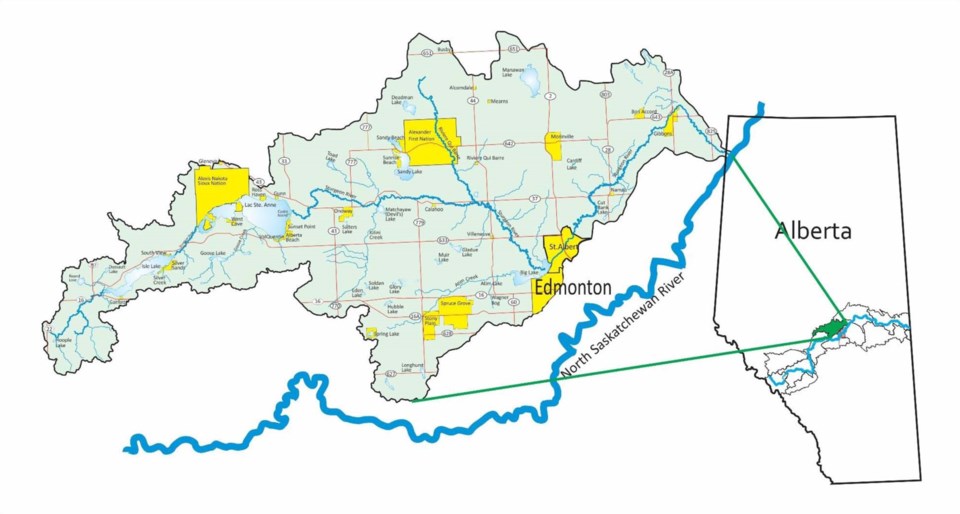Sturgeon County council has committed to a plan to protect and improve the Sturgeon River.
County council voted 6-0 May 26 to endorse the Sturgeon River Watershed Management Plan and to work with its neighbours to implement its recommendations (Coun. Dan Derouin absent).
In the works since about 2014, the plan is an initiative of the Sturgeon River Watershed Alliance – a group of 12 municipalities and five non-governmental organizations including the Big Lake Environment Support Society, Sturgeon County, and St. Albert who are active in the Sturgeon River watershed. The non-binding document is meant to co-ordinate regional actions to protect and improve the state of the Sturgeon.
The Sturgeon watershed covers 3,301 square kilometres and includes two First Nations, four counties, and eight towns and cities. The management plan notes that the watershed has been heavily impacted by human activity, with just 20 per cent of it untouched by development and 70 per cent of its wetlands drained.
The plan notes that the Sturgeon is of cultural and spiritual significance to residents and a source of valuable ecological and economic services, including drinking water.
The plan commits area governments to six broad goals, which include ensuring safe access to drinking water, keeping aquatic ecosystems healthy, and preparing communities for droughts and floods. Doing so will involve working with filling knowledge gaps, promoting best practices, and co-ordinating rules on pesticides, flood zones and setbacks.
The plan also sets priorities for different governments. St. Albert and Edmonton are to collaborate on stormwater management and low-impact development, for example, while Morinville, Gibbons and Sturgeon County are to protect fish habitat and promote awareness of riparian zones.
Mayor Alanna Hnatiw said this plan would serve as a cornerstone to other initiatives such as the county’s drainage master plan, and that it is important to teach residents about how drained wetlands raise flood risks.




